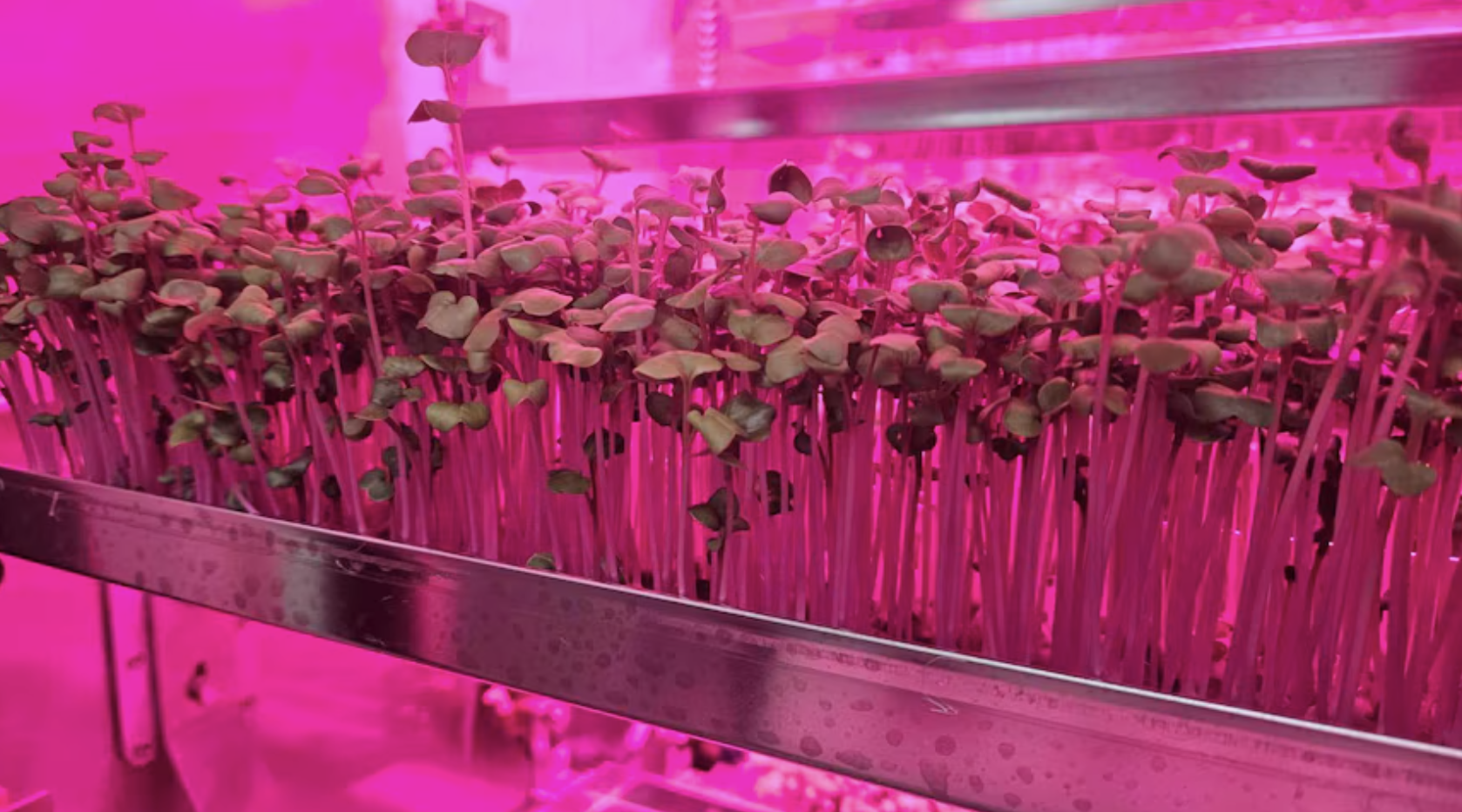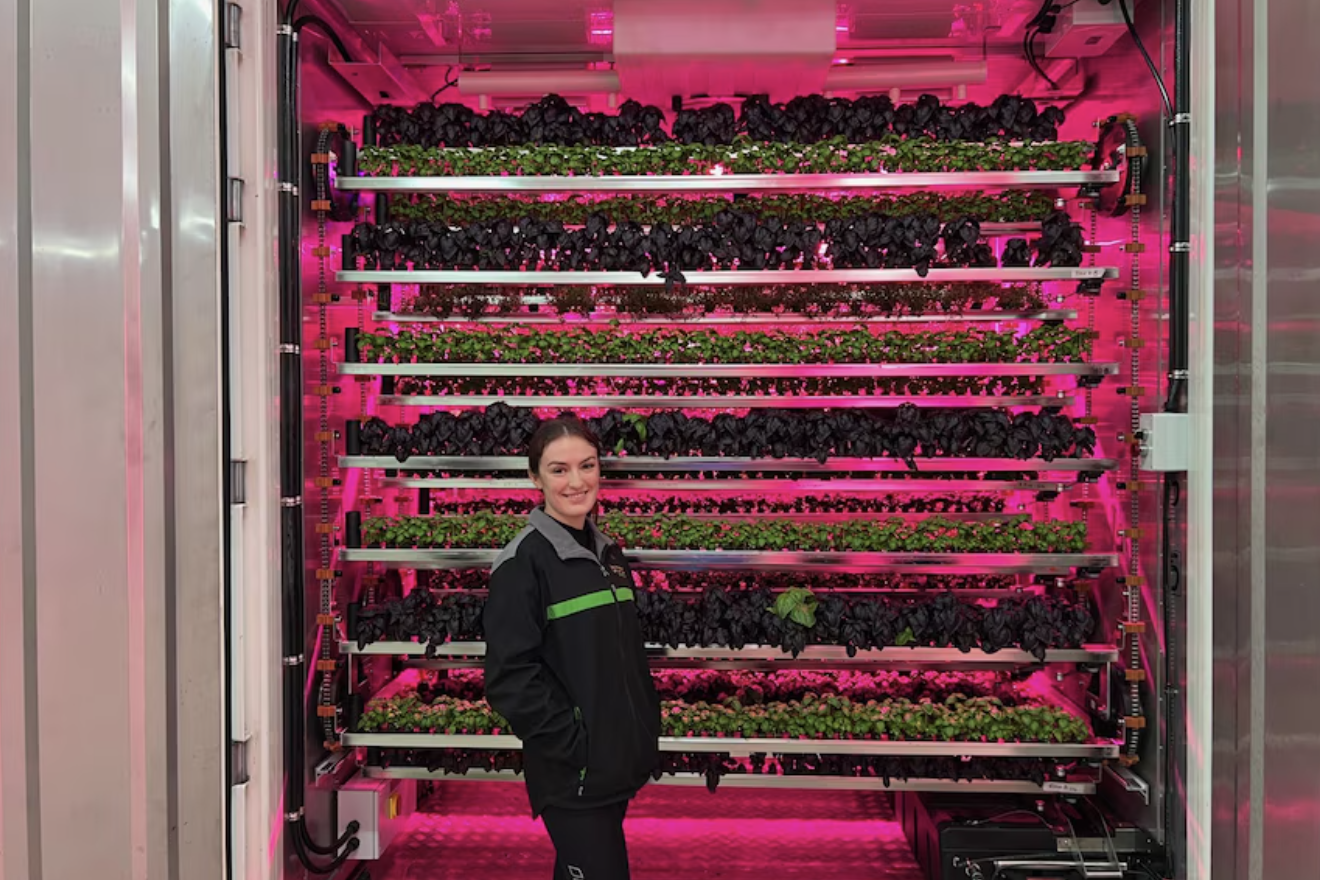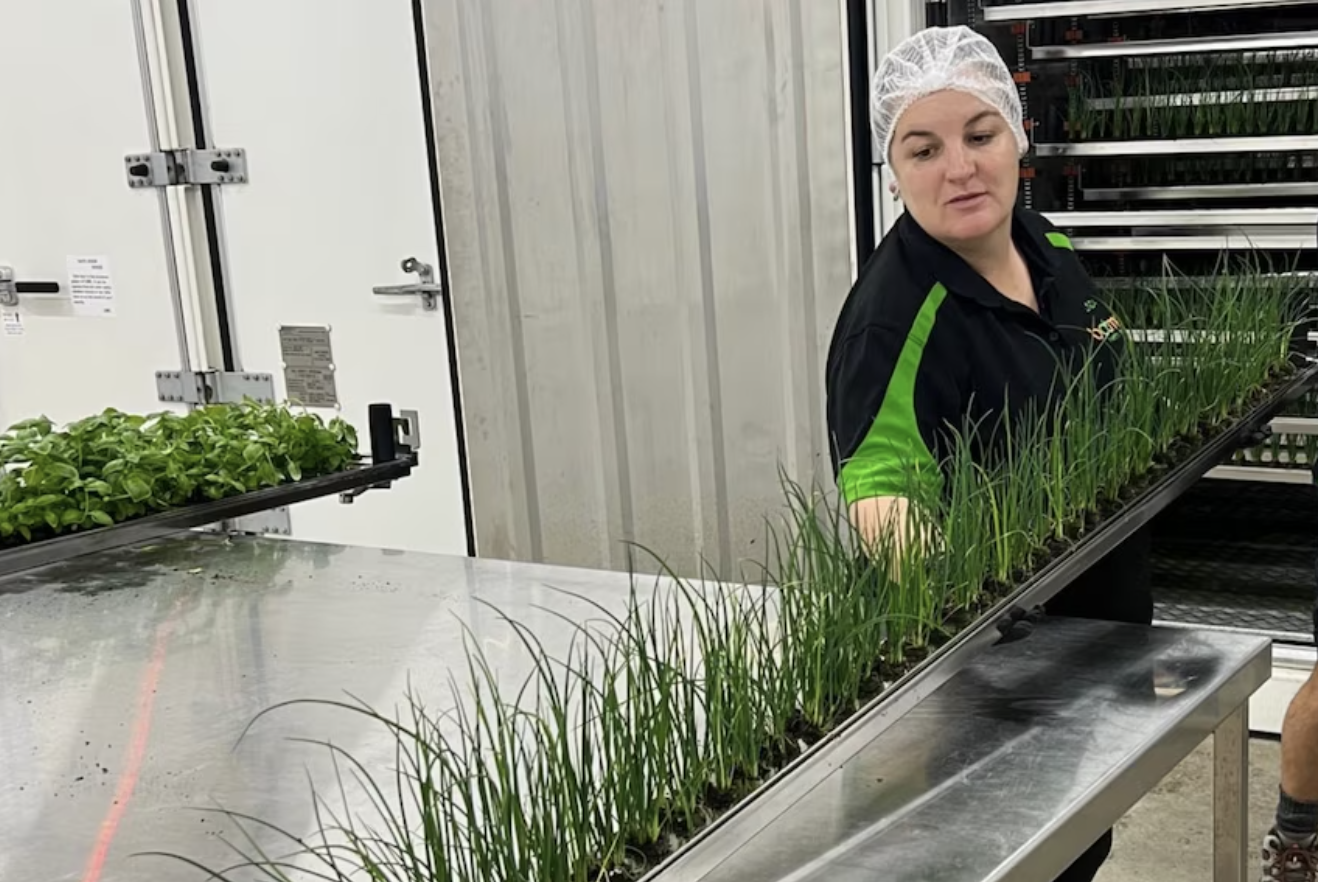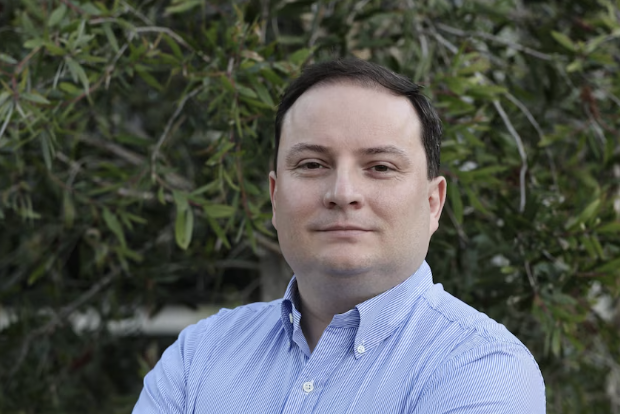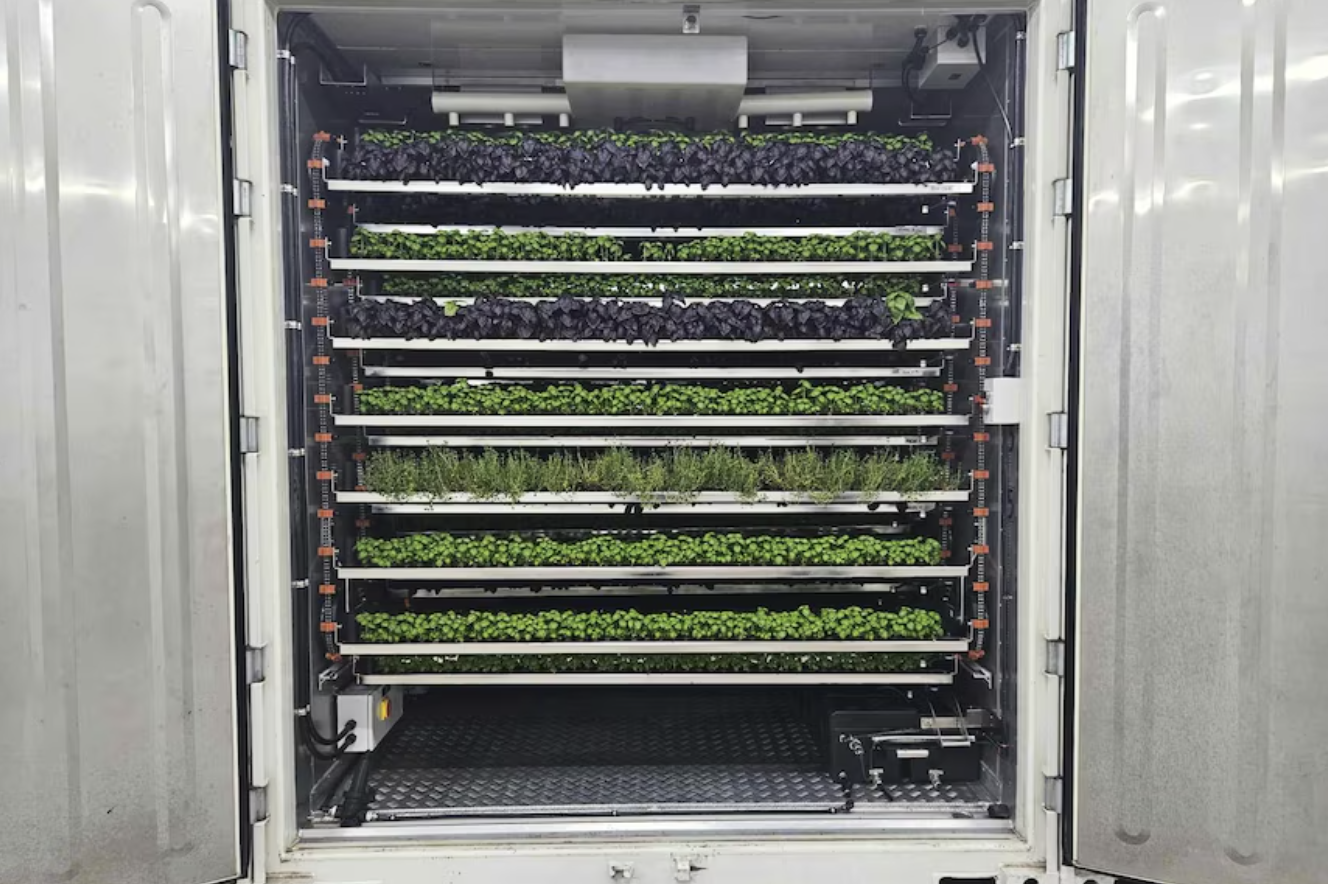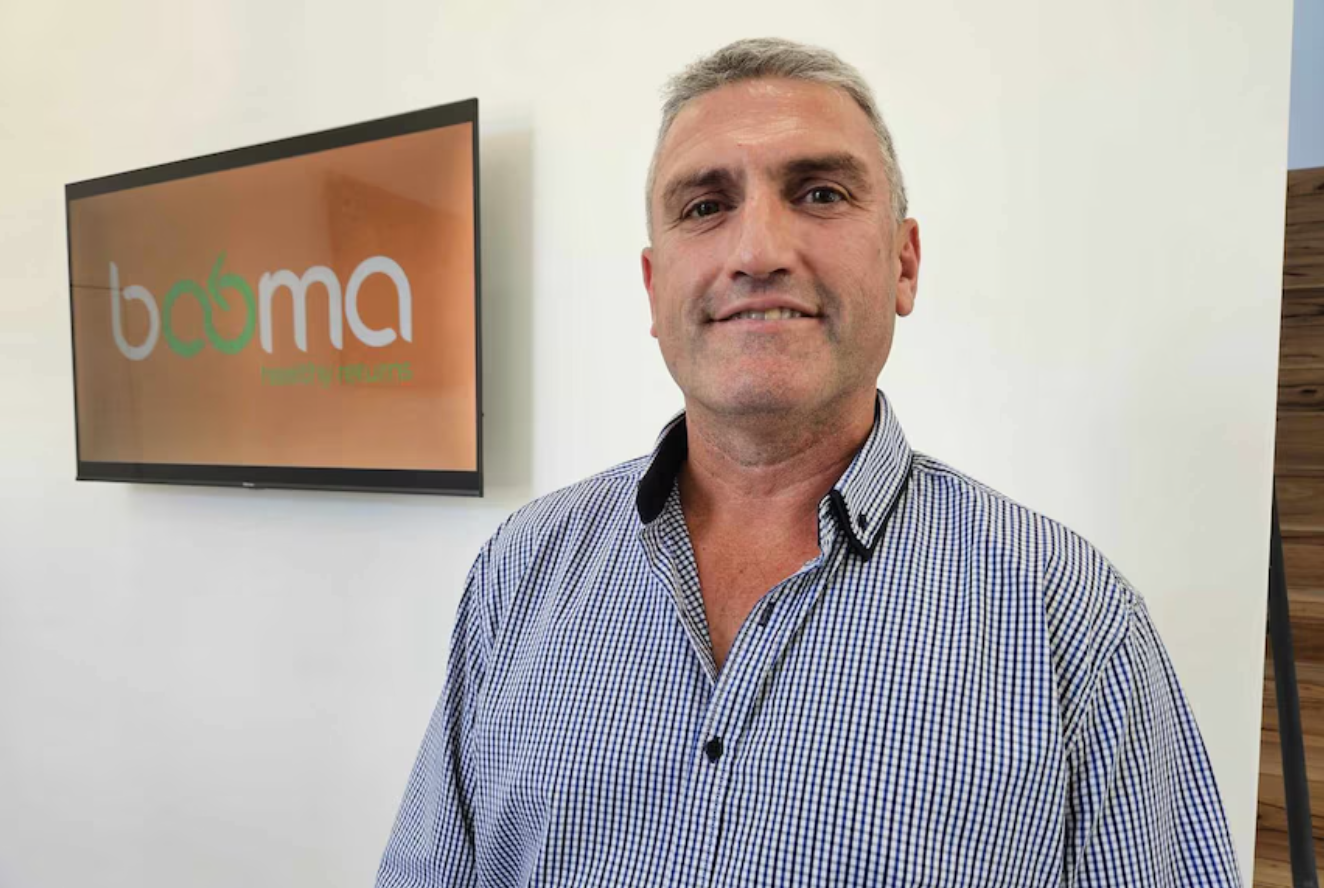AUSTRALIA: Vertical Farming Technology Could Bring Indigenous Plants Into The Mainstream
These micro herb radishes were grown in just seven days. (ABC Newcastle: Lillian Watkins)
In short: An Indigenous-owned business is using vertical farms inside shipping containers to propagate and grow herbs and lettuces.
The vertical farms use stacked vertical rows rather than horizontal and are usually located inside, making them nearly entirely immune from outside climates.
What's next? The owners are working with local Indigenous groups to locate and attempt to propagate native plants with hopes to bring them into the mainstream.
One of the most modern and high-tech farming methods may soon bring some of Australia's oldest surviving plants into the mainstream.
It's all part of the long-term plan for Indigenous-owned company BoomaFood and its indoor vertical farm in Cessnock in the NSW Hunter Valley.
The farm is producing greens like lettuce and micro herbs, but BoomaFood founder Corey Robertson hopes to expand into native herbs and crops.
"We're working with traditional owner groups wherever possible to understand where they have access to certain indigenous seeds … and working with them on how to propagate those," he said.
Mr Roberston said the business was finalising testing of its mainstream lines before launching into the market, with plans for native plants to follow in the future.
What is vertical farming?
Sustainable agriculturalist Lindsay Dodds showing a small lettuce grown at BoomaFood. (ABC Newcastle: Lillian Watkins)
Vertical farming is exactly what it sounds like — plants are grown in vertical rows, rather than horizontal as in traditional farming.
The method is increasing in popularity due to its "season independence" and more sustainable production.
The farms can be in built in warehouses, greenhouses or, in the case of BoomaFood, specially designed shipping containers.
The farms use artificial light, temperature, water and humidity control, meaning they can provide more food on a smaller footprint than traditional farming.
Mr Robertson's daughter Jaz is also involved in the business.(Supplied: Cory Robertson)
At the BoomaFood farm, micro herbs can go from being planted to ready for harvest in just seven days.
The operation has the capacity to produce more than 5,000 heads of lettuce in 36 days, 22,000 plugs of herbs in 28 days and 80kg of micro greens from each food box every seven days from its 2,000-square-metre shed.
University of Queensland protected cropping expert Paul Gauthier said vertical farming used 92 per cent less water than traditional farming methods and cut land use by 52 times.
Dr Gauthier said that was all while increasing crop output tenfold.
Cory Robertson's wife Linda Robertson harvesting chives at the Cessnock facility.(Supplied: Cory Robertson)
Dr Gauthier, who is one of the world's leading experts in vertical farming, said the practice would prove even more important as climate change progressed.
"We can't even predict the weather for one week," he said.
"But when you put all the plants indoors, you can predict the weather inside your cubic farm for the next week, the next month, the next year … for the next 100 years, as long as you have power."
Dr Gauthier said, as well as the environmental benefits, the automation involved with vertical farming reduced labour cost.
"We have some of the highest wages in the world, so the labour cost is quite significant," he said.
"And in farming at the moment, that is critical, because it's very difficult to find people to get into farming."
Dr Paul Gauthier says vertical farming will become more important as climate change progresses.(Supplied)
While automation requires fewer entry-level jobs, it does demand skilled and educated employees to oversee the process, which often comes at a higher cost.
For Mr Robertson, that's exactly the point of BoomaFood.
The project will create at least 16 local jobs and aims to employ young people, women and Indigenous workers.
"We have … accredited units of training to make sure that the staff who come on board here and are part of our supply chain have those units of competency to give them qualifications," Mr Robertson said.
"That gets our mob above award wage so we can start closing some poverty gaps as well."
The produce is grown in shipping containers with temperature, nutrients and air controlled via automation.(ABC Newcastle: Lillian Watkins)
First Nations knowledge
One element of the project is seed germination and propagation services with plans to supply seedlings to clients in traditional in-field farming and regeneration.
Mr Robertson wants to experiment with native herbs and is working with plant biologists at the University of Newcastle.
"We're on a discovery tour, a discovery session," he said.
"We've had some Aboriginal corporations from across the state, and interstate, come to our farm already and we're having those conversations … so you just don't know where it leads."
Cory Robertson spent 10 years looking around the world for the perfect technology.(ABC Newcastle: Lillian Watkins)
Dr Gauthier estimated there were about 2,000 Indigenous crops in Australia, of which only about 50 are used commercially.
"We will need more and more [Indigenous] knowledge, because they have seen way more than we have seen," he said.
The National Farmers Federation (NFF) estimated Indigenous farmers made up fewer than 1 per cent of the workforce.
Mr Robertson said that while he was proud of what this project would do for sustainable farming, the most important aspect was the impact it would have on Indigenous people's involvement in the agritech industry.
"[We are] showcasing that First Nations businesses are taking their seat at the table to go and help lead the market and be part of a broader supply chain," he said.



